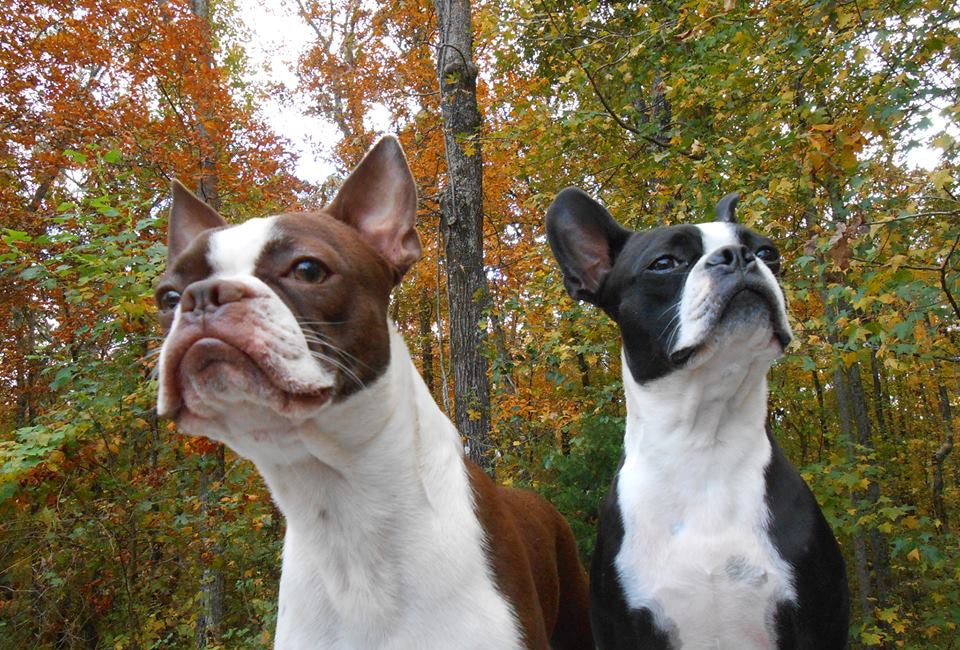
The seal coat color in Boston Terriers represents one of only three colors officially recognized by the American Kennel Club (AKC) and Boston Terrier Club of America (BTCA). While appearing black at first glance, true seal coloring reveals a distinctive reddish or brown cast when viewed under direct sunlight. This unique characteristic, resembling a wet sea lion's coat, sets seal Boston Terriers apart from other color variations. However, identifying genuine seal coloring has become increasingly challenging as the term is often misapplied to non-standard colors like red, blue, or lilac. Understanding proper seal color identification is crucial for breed standard compliance and informed breeding practices.
Seal Boston Terrier Colors
Identifying True Seal Color
The seal color in Boston Terriers appears as a black coat that reveals distinctive red undertones when viewed in direct sunlight, similar to the appearance of a wet sea lion. This unique characteristic helps distinguish genuine seal from other dark colors. The coat must show a reddish or copper cast under bright lighting, while appearing almost black in dimmer conditions.
Historical Context of Seal Color
According to historical records, seal brindle was initially the preferred pattern for Boston Terriers when breeding standards were first established. However, breeding seal brindle to seal brindle resulted in increasingly darker puppies, producing black and white and black brindle patterns. This selective breeding practice helped establish seal as one of only three colors officially recognized by the American Kennel Club for conformation shows.
Understanding The Seal Color in Boston Terriers
Genetic Basis of Seal Coloration
The seal color in Boston Terriers results from a specific genetic interaction that creates a unique black coat with reddish undertones. This distinctive pigmentation pattern is caused by the distribution and expression of melanin in the coat, making it appear differently under varying light conditions.
Breed Standard Requirements
According to AKC standards, seal-colored Boston Terriers must have dark brown eyes and black noses to meet breed requirements. The seal coloring must be accompanied by proper white markings in a tuxedo pattern. Any variation from these specific traits, such as blue eyes or improper marking patterns, disqualifies the dog from conformation events, even if the base coat appears seal-colored.
How to Identify a True Seal Boston Terrier vs. Similar Colors
Visual Comparison Under Different Lighting
While similar colors like black appear consistently dark, true seal Boston Terriers exhibit a distinct color transformation. In indoor or dim lighting, the coat looks black, but when taken outside in natural sunlight, it reveals warm reddish-brown or copper undertones. This unique color-shifting property serves as the key identifier.
Common Color Misidentifications
Several non-standard colors are frequently mislabeled as seal, including red (liver), blue, and lilac. Red Boston Terriers have hazel eyes and red noses, while blue ones typically have gray/blue eyes that transition to hazel with age. Lilac Boston Terriers display a distinct purple/blue hue with bright blue irises. Unlike these variations, true seal maintains dark brown eyes and a black nose while exhibiting the characteristic reddish cast in sunlight.
Seal Boston Terrier Colors
Breeding Considerations
While previous sections focused on identification and history, breeding seal Boston Terriers requires careful consideration. Reputable breeders caution against claims of "rare seal colors" that don't meet AKC standards. Proper seal coloring should be verifiable through breed documentation and genetic testing to ensure authenticity and health.
Show Ring Implications
Building on earlier discussions of breed standards, seal Boston Terriers face specific show ring requirements. Beyond just color appearance, they must display proper confirmation, movement, and temperament. Disqualifying factors include blue eyes, dudley nose (flesh-colored), or any solid coloring without the required white markings. Show judges evaluate the seal coloring under both natural and artificial lighting to verify the characteristic reddish cast.
Conclusion
The research reveals that seal is a distinctive and historically significant color in Boston Terriers, characterized by a black coat that displays reddish or copper undertones when viewed in direct sunlight. This unique color-shifting property, along with required dark brown eyes and black nose, helps distinguish true seal from other similar colors like black, blue, or lilac. The seal color emerged from early breeding of seal brindle patterns and remains one of only three colors officially recognized by the American Kennel Club for conformation shows.
Understanding and properly identifying seal coloring has important implications for breeding programs and show ring participation. Reputable breeders must verify seal coloring through documentation and genetic testing, while avoiding claims of "rare" variations that don't meet breed standards. In the show ring, seal Boston Terriers must display not only the correct coat color and white markings in a tuxedo pattern, but also proper conformation, movement, and temperament to meet AKC requirements. This research underscores the importance of maintaining breed standards while appreciating the unique genetic traits that create the distinctive seal coloration.